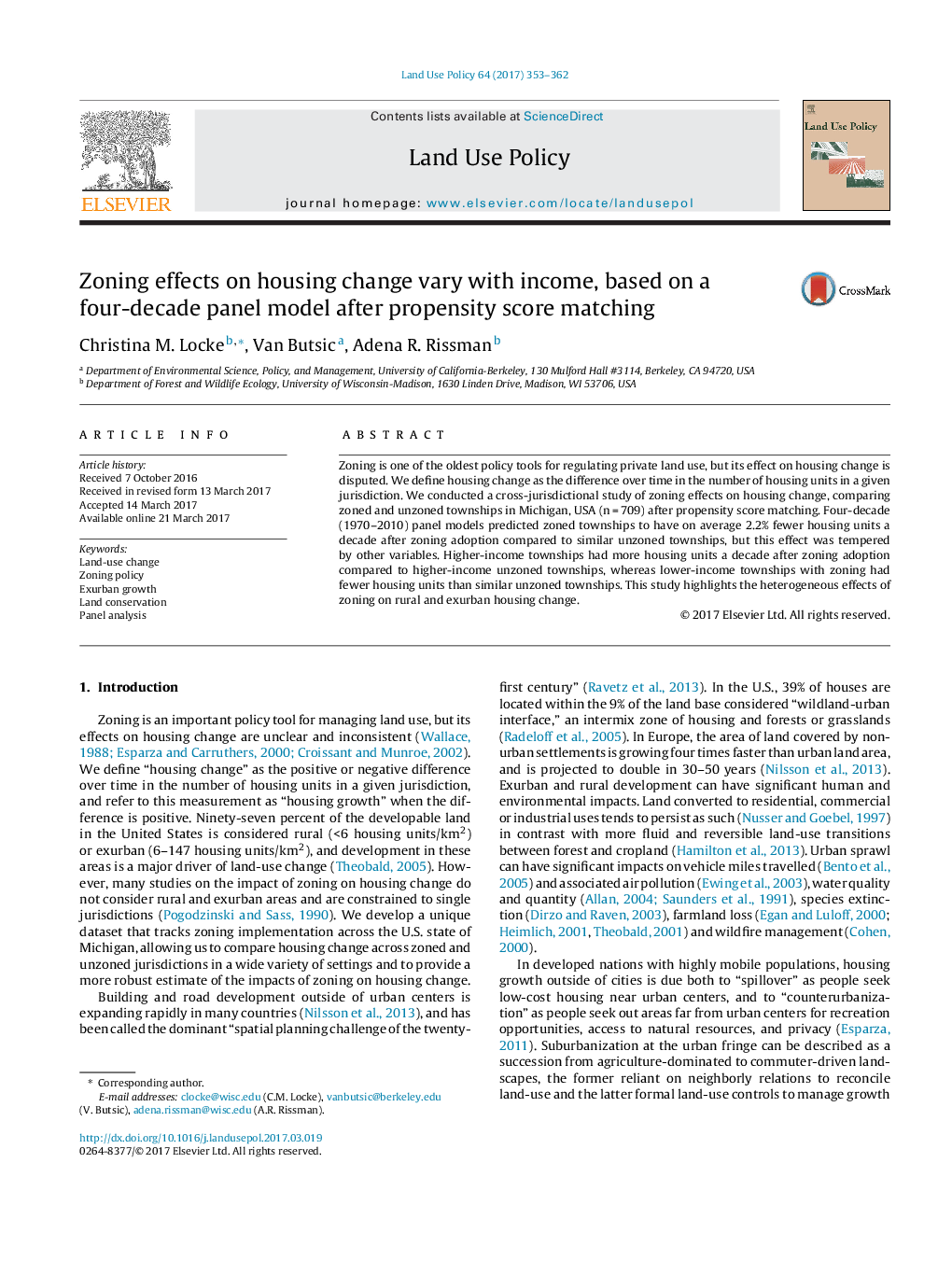| Article ID | Journal | Published Year | Pages | File Type |
|---|---|---|---|---|
| 6460853 | Land Use Policy | 2017 | 10 Pages |
•On average, zoning had a negative effect on housing growth across 709 townships.•Zoning effect was negative in low-income areas but positive in high-income areas.•Neighboring zoning laws had spillover effects on housing counts.•Underlying bias was minimized with pre-regression propensity score matching.
Zoning is one of the oldest policy tools for regulating private land use, but its effect on housing change is disputed. We define housing change as the difference over time in the number of housing units in a given jurisdiction. We conducted a cross-jurisdictional study of zoning effects on housing change, comparing zoned and unzoned townships in Michigan, USA (n = 709) after propensity score matching. Four-decade (1970–2010) panel models predicted zoned townships to have on average 2.2% fewer housing units a decade after zoning adoption compared to similar unzoned townships, but this effect was tempered by other variables. Higher-income townships had more housing units a decade after zoning adoption compared to higher-income unzoned townships, whereas lower-income townships with zoning had fewer housing units than similar unzoned townships. This study highlights the heterogeneous effects of zoning on rural and exurban housing change.
